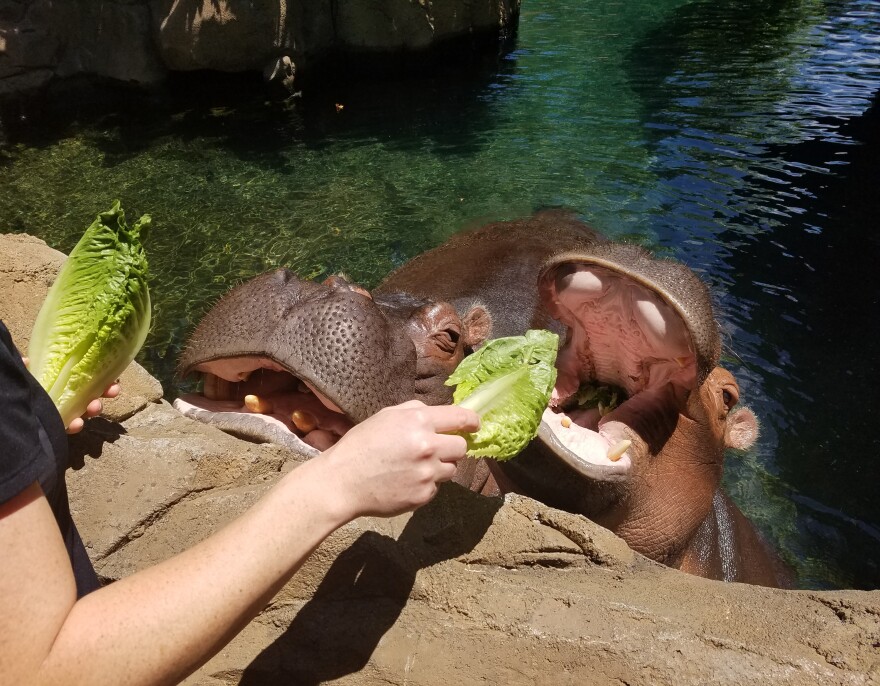Cincinnati's princess is turning into a queen. "Fiona" the hippo's tusks are starting to grow in.
"They showed up really early on but then the development and growth of them was not too impressive for a long, long time," says Wendy Rice, head keeper of the Africa Department. "In the last few months they've really erupted and gotten a lot bigger and impressive."
Rice estimates Fiona's canines are up to an inch to an inch-and-a-half in length. Hippos reach sexual maturity at five to six years of age, so Fiona - born Jan. 24, 2017 - still has a few years of growing to do.
"We would fully expect her to be fully grown and have a full mouthful of tusks just like (mom) Bebe's by age 5 or 6."

Much as she has her entire life, Fiona surprised zookeepers as a baby when her tusks began showing earlier than expected. Rice says the erupting tusks were painful and proved problematic during bottle feeding.
"She actually went off the bottle because of the tooth pain for a while and that's one of those times that her health dipped really low and we were very nervous about her," Rice says.

Keepers say Fiona's tusks feel fine now and the growth doesn't cause her any pain. Male hippo tusks can grow up to 20 inches, according to Rice. The tusks grow continuously during a hippo's lifetime. While tusks may break or chip for animals in the wild, the zoo manages its captive hippos by using a special file. Rice says the filing doesn't cause any pain and "Bebe" is cooperative if she gets a treat afterward.
The animals typically have about eight tusks, including upper and lower canines and incisors. The tusks are for fighting and defense. They also have teeth further back for eating.
"(Fiona's) able to better defend herself against mom now that she's got some tools in her mouth, too, instead of just a gummy mouth attacking her," Rice says. "They do a lot of play fighting with those tusks."
Bebe sometimes scratches Fiona with her tusks, but Rice says not to worry, it's nothing Fiona can't handle.
"If she were born in the wild in a big bloat she would have lots of siblings around, lots of other sized hippos that she would have to contend with, so Bebe's just doing a good job being a mom and toughening her up and playing with her. She's never aggressive toward her. We've never seen behavior that's made us worried."

Despite Fiona's well-documented adorableness, hippos are among the most dangerous animals in the wild. Their canine tusks slide past each other each time an animal opens and closes its mouth. "They're self-sharpening almost like a pair of scissors," Rice explains. "Those canine tusks get really sharp naturally from that wear and tear and that slide that happens every time they open their mouths."
While their tusks are part of what make hippos so deadly, they're also one of the chief reasons hippos are listed as vulnerable by the International Union for Conservation of Nature. Hippo tusks are made of ivory.
"They are hunted; they are poached for that ivory," Rice explains. "In some ways it's more desirable than elephant ivory because it's a little softer and easier to carve so people want it for things like gun handles and knife handles and chess pieces and all kinds of trinkets that we don't really need, but a hippo needs their tusks.
"It's one of their most recognizable features, certainly, but also one of the things that's going to contribute, probably, to them becoming endangered if we don't change things now."



